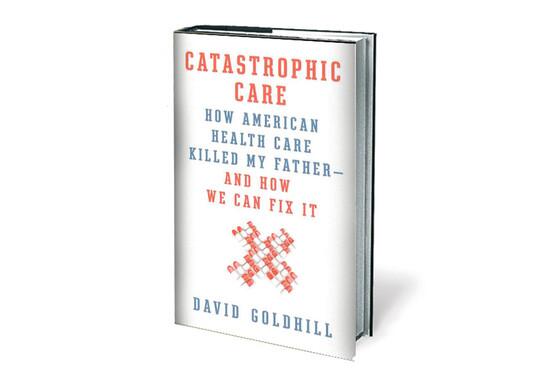The Affordable Care Act is already
cutting
health care costs, especially at hospitals that in the past provided
charity care for uninsured, low-income patients. The reduction in charity care
in states that have expanded their Medicaid programs with federal funds means
the costs for this care are no longer being shifted to insured and self-paying
patients, which makes health insurance more profitable for hospitals and
insurers without increasing consumer costs.
But this drop in costs is happening only in the states in
about half of the nation that have expanded their Medicaid programs. The other
states — mostly in the South and the Plains — have been involved in political
struggles that have blocked expansion of health insurance for their poor
residents.
Expanding state-run Medicaid assistance programs has been
called critical for the success of the new federal health care law. In states
that haven’t expanded Medicaid, it is currently available to those who have
incomes at or below the federal poverty line, which in 2014 is $11,670 for a
single person and $27,910 for a family of four. In the states that have
expanded their Medicaid programs, the eligibility level is 138%, or $16,104 for
an unmarried person and $37,375 for a family of four.
The
federal health law
was written with this expansion in mind, and it offers most people with incomes
ranging from 138% to 400% of the federal poverty level the opportunity to be
eligible for federal subsidies as they purchase health care policies through
the new health insurance exchanges.
These subsidies were to be paid for by decreases in
Medicare reimbursements to hospitals and doctors. The U.S. Supreme Court
decided that the federal government could not force states to expand their
Medicaid programs, but the cuts in Medicare reimbursements did not change.
Unfortunately, the cutoff point for a subsidy was set at
138%, leaving those between 100% and 138% with no options in the states that
didn’t expand their
Medicaid programs.
The resistance to Medicaid expansion is creating a poverty gap.
“It’s a crime,” Lisa Dubay, a senior fellow at the
nonpartisan Urban Institute, said of the poverty gap. “These are the most
vulnerable people in our society. They have no other access to health care. We
have no way to take care of them and that just seems wrong.”
Aside from the ethical dilemma of not providing health
care to low income people who don’t have the ability to purchase subsidized
insurance, there is a significant financial cost for the states that aren’t
expanding. This cost is being passed on to providers and insurers alike, and
they are beginning to exert pressure on state governments to agree to the federally
funded expansions.
In the states that haven’t expanded Medicaid, at least
4,805,380 people are in the poverty gap. These people won’t receive federal
subsidies to help them purchase insurance, and they will continue to require
costly charity care that is shifted to those with insurance and self-payers.
The Americans who fall into the poverty gap in their
state also won’t be able to get preventive care they need and this in turn
could shorten their lives. In addition, the number of bankruptcies will continue
to grow, as nearly 2 out of 3 filings are caused by medical bills. No one can
predict the outcomes of these efforts, but one thing is certain: The ones who
are suffering the most are those being left behind in the health care poverty
gap.
Here’s a closer look at four states — Maine, North
Carolina, Utah and Virginia — that haven’t expanded their Medicaid programs
with federal funds. These states have adopted widely differing approaches to
the question of Medicaid expansion.
Maine
In Maine, Gov. Paul LePage, a Republican, who has vetoed
legislative attempts to expand Medicaid in his state, cites the future costs
once the federal subsidies for expansion end. The Democratic majority in the
legislature plans to continue to introduce and pass legislation aimed at
expanding Medicaid for the 24,390 people who are in the poverty gap.
Jeffrey Austin, vice president of government affairs and
communication at the Maine Hospital Association, said the state’s 39
community-governed hospitals need Medicaid expansion to make up for scheduled
cuts in Medicare payments.
“The logic behind the tradeoff is sound,” he said in
testimony. “Hospitals will receive less reimbursement under one program
(Medicare) in order to expand another program (Medicaid). When the Supreme
Court ruled that Medicaid expansion was optional, it did not rule that the
associated cuts were optional as well. So hospitals across the country faced
the prospect of significant pain (Medicare cuts) without the bargained for gain
(Medicaid expansion). That is why you have seen significant hospital advocacy
in favor of expansion in Maine and across the country. So it matters to us that
people understand 100% federal financing of expansion in large measure equates
to hospital-financing of expansion. Hospitals can not afford $30, $50 and $100
million annual cuts in Medicare without the benefit of Medicaid expansion.
North Carolina
In North Carolina, GOP state legislators have refused to
expand Medicaid for the 318,710 people in the poverty gap, and are considering
cuts to the state’s Medicaid program. Two weeks ago, 100 members of the North
Carolina Hospital Association joined together to tell states legislators how
difficult these cuts would make their job of delivering health care to current
Medicaid participants. They told lawmakers that government programs pay for 2
out of every 3 patients hospitalized statewide and generally at rates that are
below the cost of care.
“They mean truly people getting care, people not, people
getting jobs, and for some hospitals, they may mean survival,” said Democratic
Rep. Rick Glazier.
In recent years, after control of both houses shifted to
Republican hands, the conservative agenda that trimmed rights and cut back on
social services set off widespread citizen protests called “Moral Mondays.” To
date, over 1,000 people have been arrested statewide for acts of civil
disobedience.
Utah
In Utah, Republican Gov. Gary Hebert is trying to work
with the federal government to create a program to use federal funds slated for
Medicaid expansion in his state to help the 57,850 who would be in the poverty
gap purchase private insurance plans. The governor’s plan would use federal
Medicaid funds to purchase health care insurance for all residents earning less
than 138% of the federal poverty level.
Unlike other Medicaid expansions, this proposal would
allow Utah to drop the eligibility to 100% of the federal poverty level in
three years, when federal officials expect the states to pick up 10% of the
cost of the expanded Medicaid programs.
Opponents of the proposal are worried that employers will
cut back on insuring low-earning employees and that at the end of the
three-year pilot project, there will be more uninsured residents if the state
returns to the 100% level. Utah House Speaker Becky Lockhart said she would
rather use $35 million in state funds for limited coverage. “Attaching
ourselves as a state to Obamacare is extremely concerning to me,” she said.
Virginia
In Virginia, a court battle is brewing between Democratic
Gov. Terry McAuliffe and the GOP-led state legislature over 190,840 people in
the poverty gap. Citing a moral imperative, McAuliffe tried to use his existing
executive powers to create a procedural path to provide Medicaid to Virginia’s
400,000 potentially eligible adults.
“Secretary Hazel will have a plan on my desk by no later
than September 1st detailing how we can move Virginia health care forward even
in the face of the demagoguery, lies, fear and cowardice that have gripped this
debate for too long,” McAuliffe said about Bill Hazel, the state’s Secretary of
Health and Human Services. Virginia’s House GOP leaders warned the governor
that they will block him.
“We are prepared to challenge this blatant executive
overreach through all available avenues, including the court system, ” said a
joint statement recently by Republican House Speaker William Howell.
McAuliffe just vetoed seven items, including an amendment
passed by Republicans that stated Medicaid can’t be expanded unless the General
Assembly explicitly appropriates money for it.
 RSS Feed
RSS Feed Twitter
Twitter





